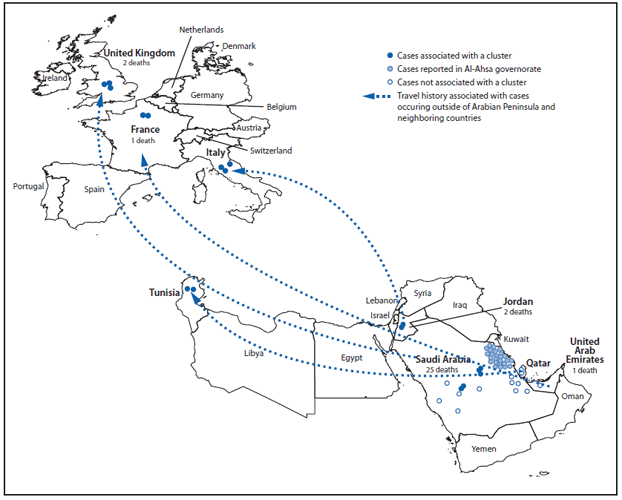
Section Branding
Header Content
New Viral Threat: MERS - Middle East Respiratory Syndrome Coronavirus
Primary Content

An outbreak of SARS – Severe Acute Respiratory Syndrome – caused hundreds of deaths and infected thousands more, little more than a decade ago.
A new coronavirus, in the same family, has been linked to human infection and death, and documented human to human transmission. It’s called MERS-CoV, which stands for Middle East Respiratory Syndrome Coronavirus, so named because all cases so far have been linked to one of four Middle Eastern countries: Saudi Arabia, Qatar, Jordan, and the United Arab Emirates. As of June 13, 2013, the CDC reports 58 confirmed cases and 33 deaths. Saudi Arabia has been hardest hit with 43 cases and 27 deaths.
The median age of patients infected so far is 56. Most infections have occurred in males (2.6 to 1 ratio). All patients had respiratory symptoms and several also had abdominal pain, and diarrhea. An update by the CDC published in the June 7, 2013 MMWR reveals clusters of infections in the United Kingdom, Italy, France, and Tunisia have been seen in travelers recently returned from the Middle East, and people with whom they’ve subsequently been in contact.

The incubation period -- the time between exposure and the appearance of symptoms -- is still under study, but seems to range from 1 to 12 days. Doctors should be on alert and contact their local health department if they have patients with lower respiratory illnesses (fever greater than 100.4 degrees F, cough, and signs of lung infection) within 14 days after travel to the Arabian Peninsula or neighboring countries.
The CDC and WHO (World Health Organization) are closely following this outbreak. Check their websites for the latest updates.





